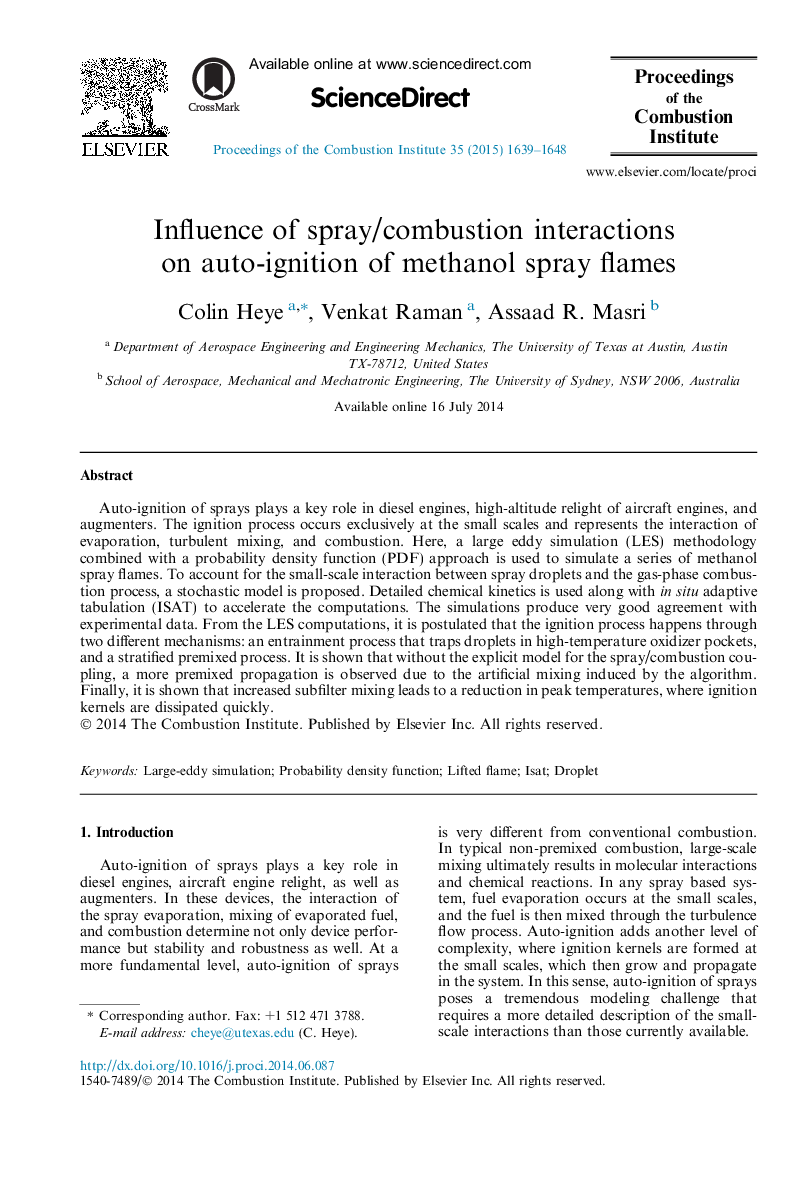| Article ID | Journal | Published Year | Pages | File Type |
|---|---|---|---|---|
| 6679280 | Proceedings of the Combustion Institute | 2015 | 10 Pages |
Abstract
Auto-ignition of sprays plays a key role in diesel engines, high-altitude relight of aircraft engines, and augmenters. The ignition process occurs exclusively at the small scales and represents the interaction of evaporation, turbulent mixing, and combustion. Here, a large eddy simulation (LES) methodology combined with a probability density function (PDF) approach is used to simulate a series of methanol spray flames. To account for the small-scale interaction between spray droplets and the gas-phase combustion process, a stochastic model is proposed. Detailed chemical kinetics is used along with in situ adaptive tabulation (ISAT) to accelerate the computations. The simulations produce very good agreement with experimental data. From the LES computations, it is postulated that the ignition process happens through two different mechanisms: an entrainment process that traps droplets in high-temperature oxidizer pockets, and a stratified premixed process. It is shown that without the explicit model for the spray/combustion coupling, a more premixed propagation is observed due to the artificial mixing induced by the algorithm. Finally, it is shown that increased subfilter mixing leads to a reduction in peak temperatures, where ignition kernels are dissipated quickly.
Related Topics
Physical Sciences and Engineering
Chemical Engineering
Chemical Engineering (General)
Authors
Colin Heye, Venkat Raman, Assaad R. Masri,
